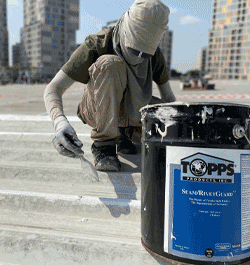UP TO THE MINUTE
Crunching the Numbers: Unraveling the Profit Puzzle for Roofing Crew Leaders by Analyzing Costs - Part Two

By John Kenney, Cotney Consulting Group.
Here's how you can collect and analyze data to optimize operations and plan for future growth.
Part 1 of this article series focused on the financial implications of running a roofing contracting business. It covers the hidden costs of business operations, distinguishing between direct and indirect costs, understanding overhead costs, and the importance of mark-up as a mechanism to cover operational expenses and turn a profit. The article emphasizes the need for crew leaders to optimize resource allocation and minimize waste to ensure optimal profitability and cover overhead costs. In Part 2 of this series, we will examine how to collect and analyze data and use that data to optimize operations, improve customer satisfaction and plan for future growth.
Enhancing profitability through efficiency
To optimize profitability, roofing contractors must scrutinize each job for potential efficiencies during the estimating process and at the project's inception. Workflow efficiencies could range from improved crew communication and well-defined task allocations to strategic staging of materials and stringent quality control measures.
Crucially, production is the main variable that can increase or decrease a project's profitability. As a crew leader, one may not have control over factors left out of the estimate, but they can significantly influence crew productivity.
By running an efficient crew, potential losses from unforeseen circumstances can be minimized, and profitability from projects bid correctly or with a large profit margin can be maximized. The combined profits and losses from all completed projects ultimately determine the company's success, underlining the importance of efficiency and productivity in each project undertaken.
Leveraging efficiencies to offset overhead costs
To offset overhead costs, it is essential to understand how different aspects of a roofing project can be executed more efficiently. A project's efficiency can be enhanced in several ways.
Improving crew communication
Optimal roof installation is achieved when the crew operates as a well-coordinated team. Enhanced communication helps eliminate misunderstandings, reduce duplication of efforts and improve workflow coordination, thus leading to better project execution and overall profitability.
Allocating tasks efficiently
Efficiency in productivity can be achieved when tasks are distributed amongst crew members in a manner that complements their skills and optimizes the workflow. For instance, splitting tasks into different phases – such as setting screws and plates and then installing them – can lead to faster completion times and less wastage.
Streamlining material staging
Efficient staging of materials can save considerable time and effort, thus speeding up installations. An efficient crew leader will ensure that the necessary materials are easily accessible to the crew, minimizing time wasted in transportation and retrieval of materials.
Implementing quality control checks
Quality control checks are vital to any roofing project. While it may seem like these checks delay the project, they help identify potential issues early, thereby reducing the likelihood of costly repairs or revisions later. Such proactive measures can help a project stay on track, reduce wastage and ensure the end product meets the required standards.
Understanding the correlation between production and profitability
Production is a pivotal factor that can significantly impact a project's profitability. Consider a project estimated to take 1,000 hours of labor. If it is completed precisely within the estimated time, the profit made would be what's left after subtracting all overhead costs. However, if the project finishes in 900 hours, the extra 100 hours, plus the mark-up of those 100 hours, add to the company's overall profit pool.
In reality, a small profit is likely if a project uses exactly the estimated amount of hours and materials. However, any deviation from the estimate can eat into profitability, emphasizing the importance of productivity in influencing a project's profitability. A well-planned and efficiently run project can help minimize losses and maximize profits.
In conclusion
The profitability of a roofing contracting company hinges on a deep understanding of direct and indirect costs and an unwavering focus on improving efficiencies. As a crew leader, recognizing how each decision can impact the bottom line, effectively managing resources and implementing efficient work processes are crucial to ensuring the financial success of individual projects and the company.
Learn more about Cotney Consulting Group in their Coffee Shop Directory or visit www.cotneyconsulting.com.



















Comments
Leave a Reply
Have an account? Login to leave a comment!
Sign In